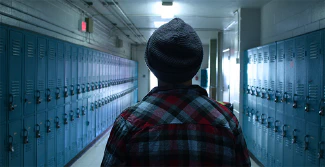Special Needs Students Emergency Preparedness on Campus

In unpredictable situations, how can leaders in schools protect their special needs students? Violent incidents in schools are terrifying for everyone, and that is no different for the students, teachers, and aides in special needs classrooms.
It may, however, be even more difficult to ensure the safety of students who have a different perspective of the world, and who cope with difficulties in a variety of ways. What is the best way to communicate and handle emergencies with these students in a high-stress and potentially dangerous situation?
The Potential Danger Special Needs Students Face in School
Students across the United States already have many potential violent emergencies to worry about in their schools, and these are even more prominent for special needs students. Factors such as dealing with intolerant people, being physically vulnerable, and not having the social skills to handle high-stress situations can all contribute to an even more dangerous scenario.
An emergency (or even a drill) can cause a physical and/or an emotional reaction for students, especially those with special needs. The loud noises from alarms, flashing lights, other students and adults reacting emotionally, and the abrupt change in everyday routines can all cause a special needs child to quickly become frustrated, angry, or inconsolable.
Whether the problem is bullying, an active shooter, a bomb threat, etc. special needs students need to have protocols in place that ensure their safety and wellbeing while also accounting for the additional factors that may make the emergency even more difficult for them to handle.
While it might be tempting for some leadership to allow special needs students to “opt out” of any emergency drills, it is of the utmost importance that they are included in the practice for a dangerous situation. The more familiar they are with procedures, what an emergency could look like, and their own roles during an emergency, the smoother the process will be if and when one actually occurs.
Planning an Emergency with Special Needs Students
First things first, you will need a plan in place for every type of potential emergency. Examples of this could include:
- Fires
- Bomb threats
- Active shooters
- Hurricanes/storms
- Power outages
- Missing student
While this is not necessarily an exhaustive list, it’s a great place to get started with your emergency planning.
As a school leader, you more than likely have emergency operation plans (EOPs) for most if not all of these potential situations. However, the plan(s) may need to be adjusted for special needs students and their teachers and aides.
Creating an Emergency Operation Plan that Fits Everyone
So, how can you make your plan a better fit for your special needs students?
It is important that no one is left out of this conversation. Special needs, in this case, includes students with physical disabilities, those who are unable to move or act quickly or independently, those with severe sensory disabilities, and those who are not going to understand what is happening or why their everyday routine is being disrupted abruptly. What this means is that your plan cannot be one-size-fits-all.
Students who need to use a wheelchair will, of course, need to have different steps in their plan than an autistic student who struggles with loud noises and crowds. It is all about customizing each plan to ensure that each and every child makes it through the situation safely. A large portion of the planning will be making sure that there are enough staff members who are fully trained to assist these students in any sort of emergency to ensure their safety.
For students with IEPs (Individualized Education Plan) or a 504, emergency plans should ideally be built into the rest of the student’s education plan. These should include the appropriate staff training needed in these events, practice drills, ways to identify any potential obstacles before, during, and after an emergency occurs, and full mitigation. By including emergency procedures in these students’ plans, you are streamlining the process of notifying the parents of the steps you are taking to keep their children safe as well.
Communicating Emergency Plans with Special Needs Students
Once you have procedures for emergencies planned out, it is important to conduct drills with all students, especially those with special needs, so everyone knows their role during a violent event or other emergency.
Here are some tips for discussing and conducting emergency drills and events with your special needs students and their teachers/aides.
Keep the Lines of Communication Open
This first tip is vital for the special needs students, the school staff, and the students’ guardians. Input should be encouraged from all 3 of these groups, especially the students. Knowing how they feel about the potential scenarios will allow you to understand how to better guide them through a high-stress situation.
For example, some students may struggle with simply being told what to do during an emergency drill, and may benefit from visual aids. Other students may simply be overwhelmed and frustrated or even confused with the idea of an emergency, and giving them a chance to vent those feelings can be helpful.
Keep Practicing
Make sure that there are regularly scheduled, consistent drills for all of the emergency situations you are preparing for. While it may seem inconvenient, getting both your special needs students and staff used to the procedures will only benefit them during an emergency.
Your state more than likely has guidelines for regular fire drills, but you may want to conduct your variety of drills more than required for additional practice.
Be Flexible
Most importantly, be flexible and willing to adapt these plans as needed. While it is important to have set plans in place, there may be situations where procedures need to be changed. Whether that means you have new special needs students that need more specific procedures put in place, or that there are visitors who require special accommodations, it’s an excellent idea to stay alert and willing to make adjustments.
Keeping Your School Safe with 911Cellular
In addition to taking these additional precautions with your special needs students and staff, you may also want to consider a communication system that keeps you and your staff connected and informed no matter what the emergency is.
911Cellular offers unprecedented technology that includes wearable, computer, and mobile panic buttons, and a mass notification system. 911Cellular software is the perfect solution to keep your staff connected and your schools safe during any sort of emergency.
Interested in learning more about 911Cellular safety technology? Request a demo or read more about our solutions on our website.
Tags: Critical communication Mental health School safety Emergency communication



